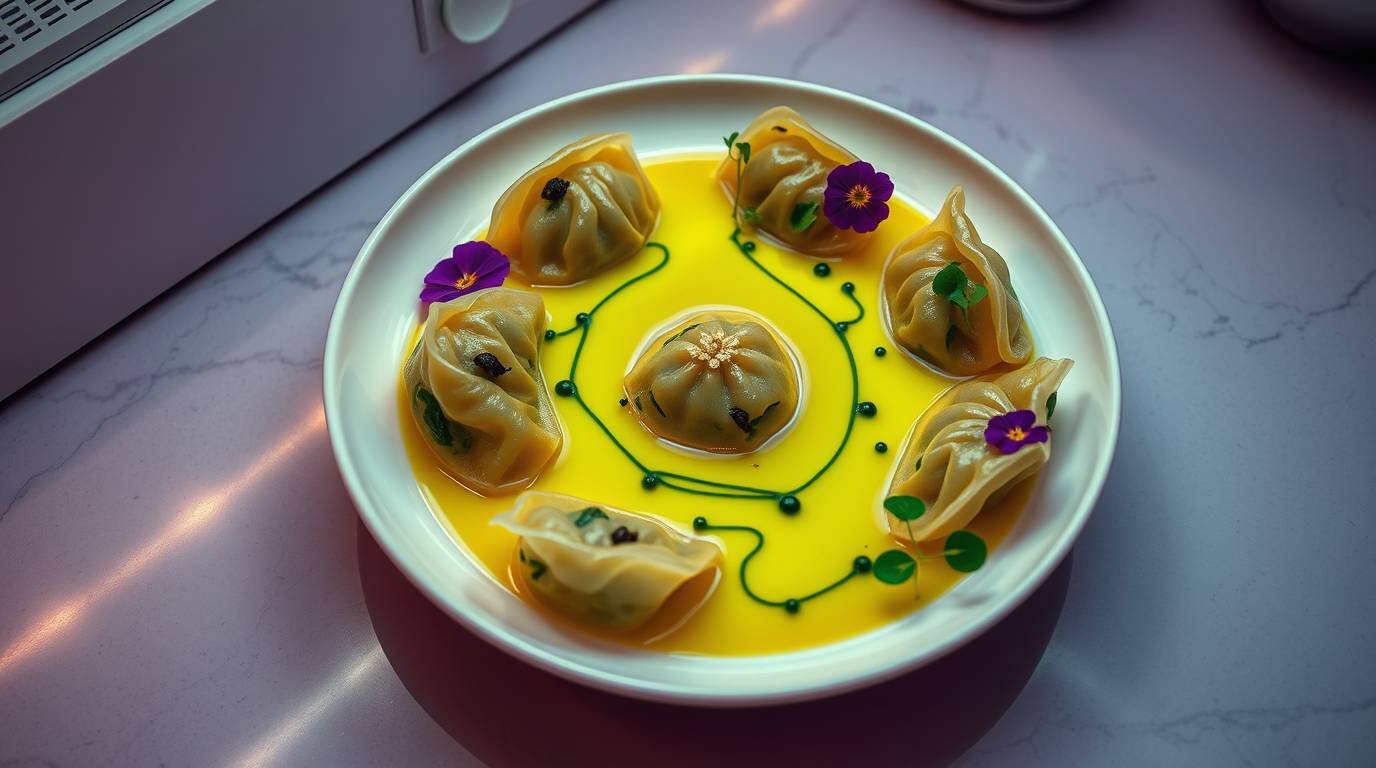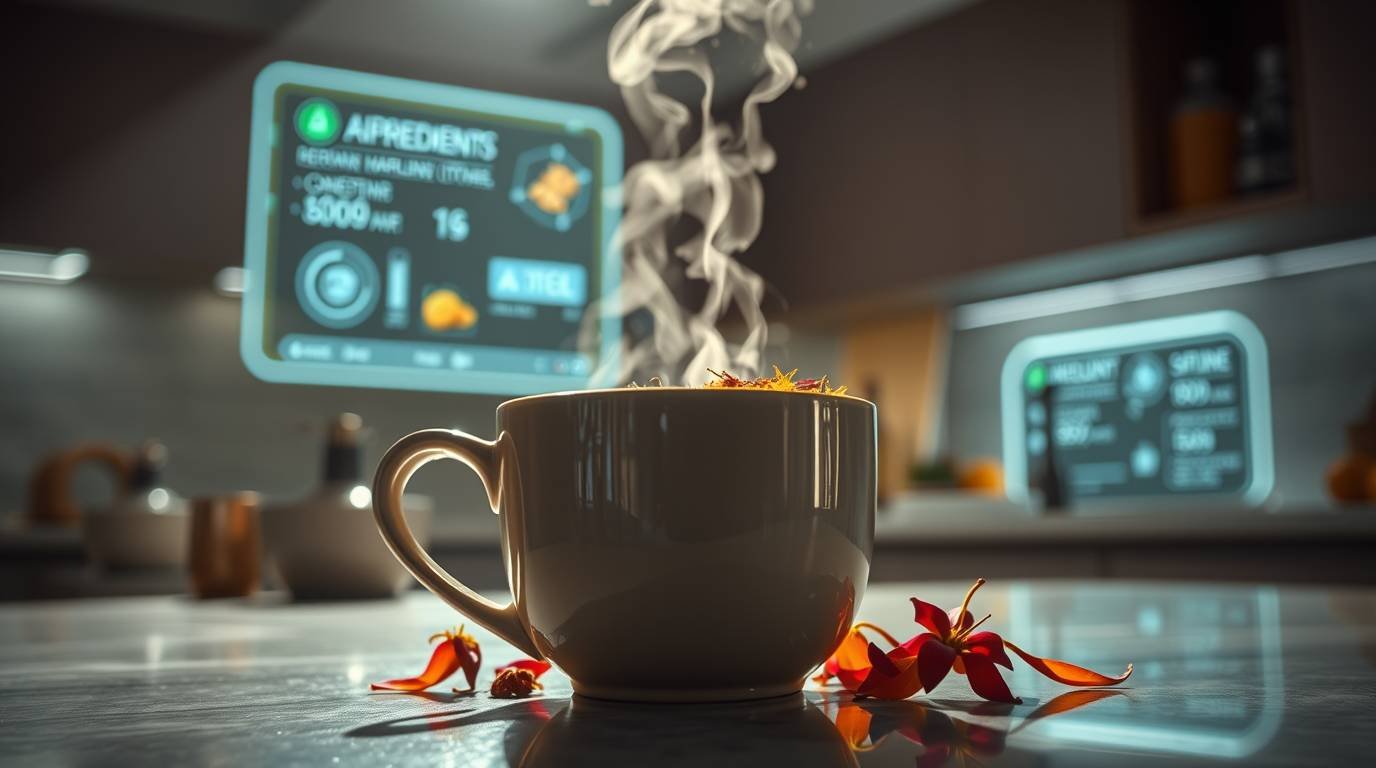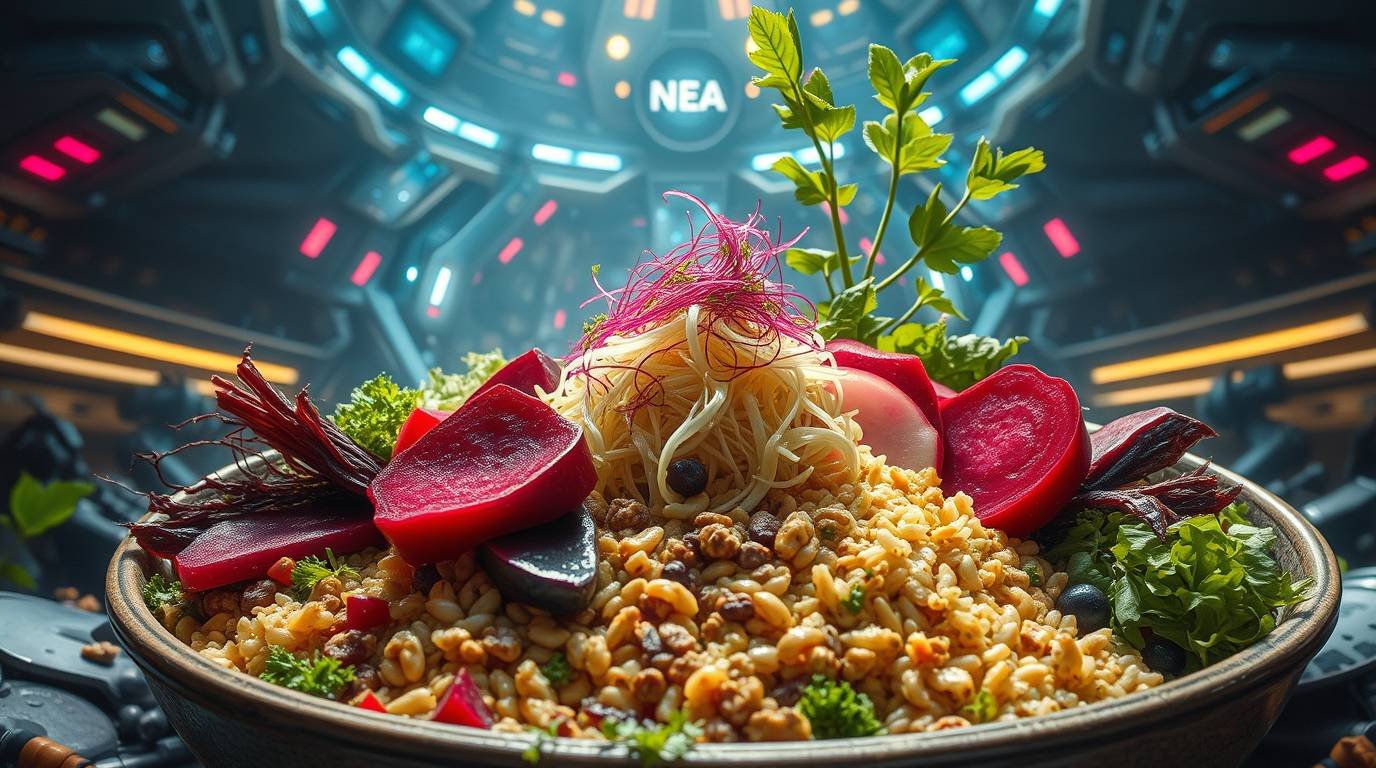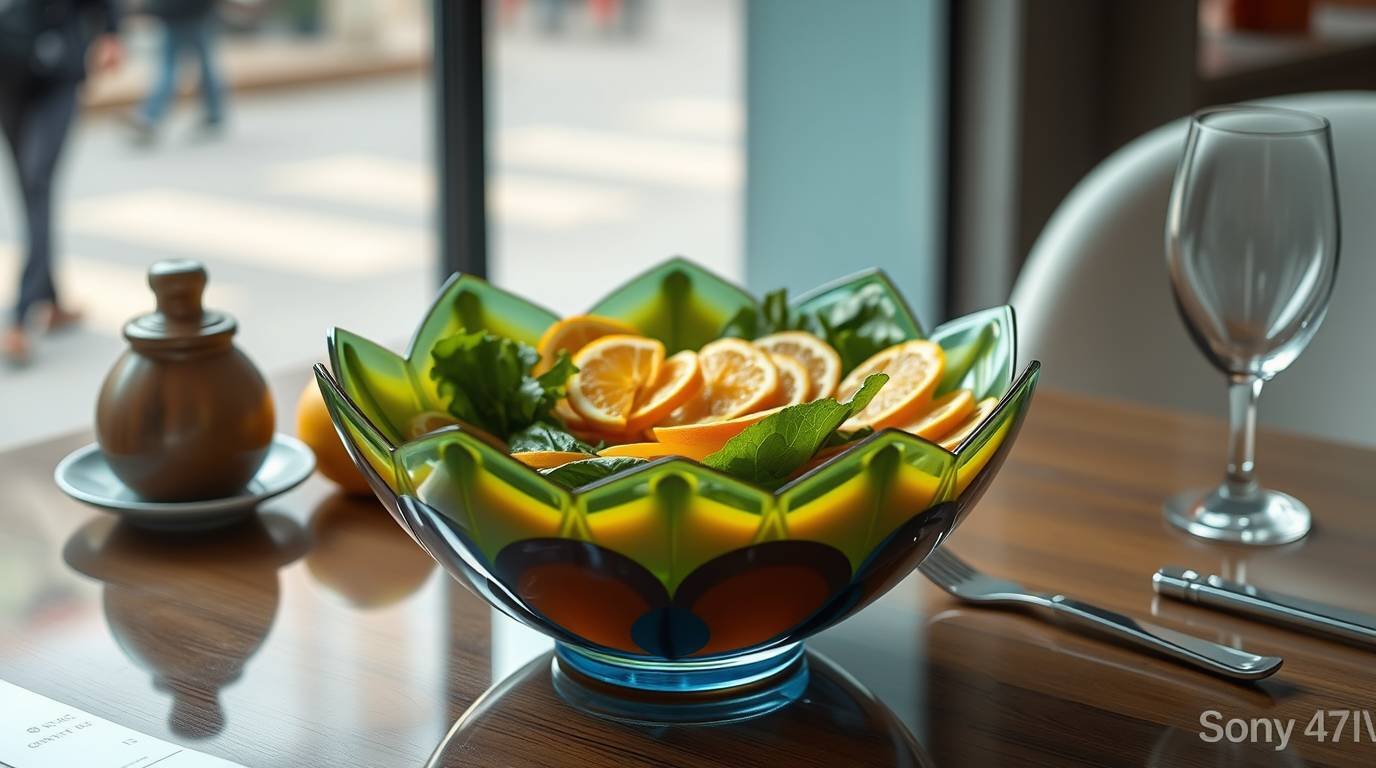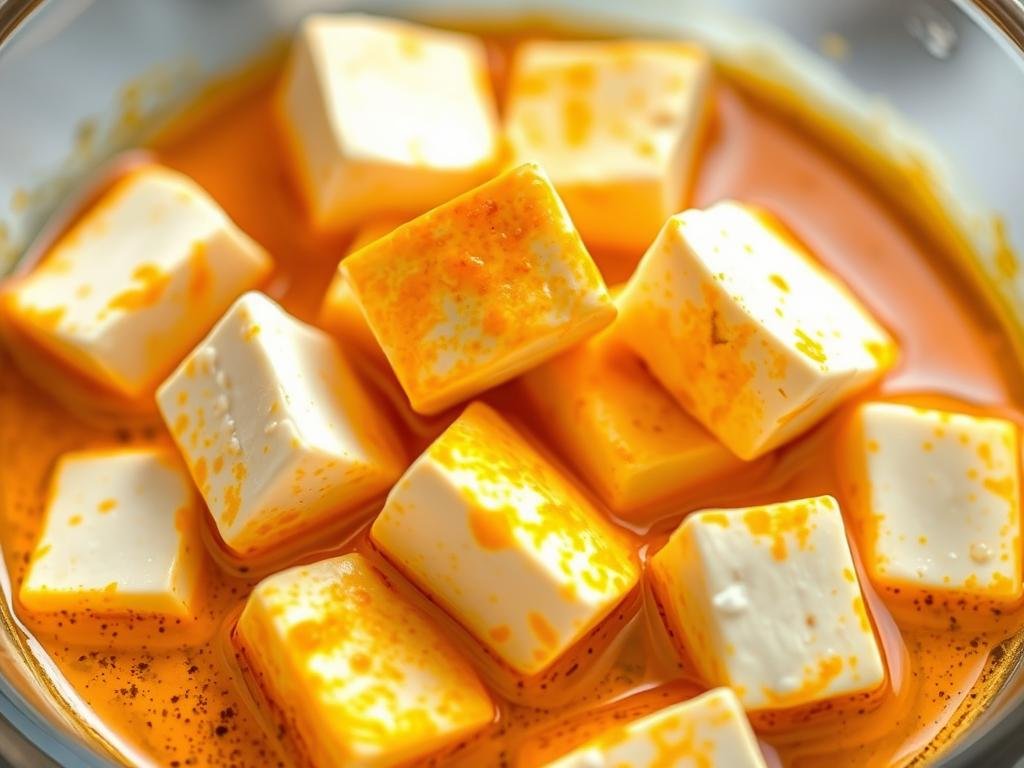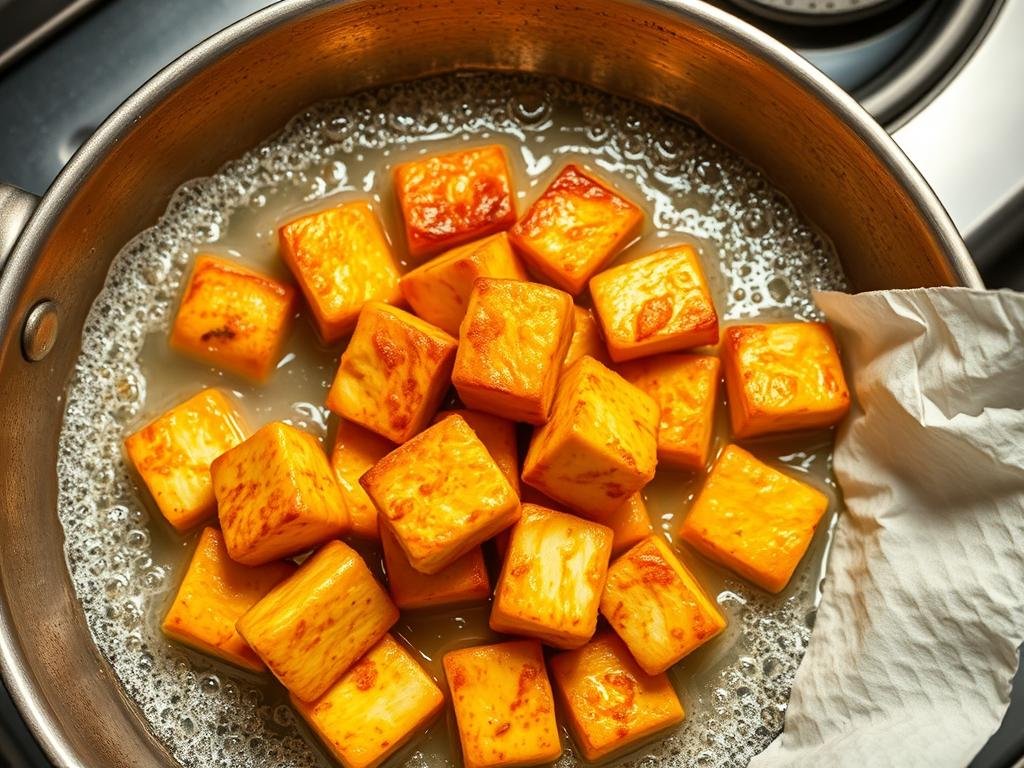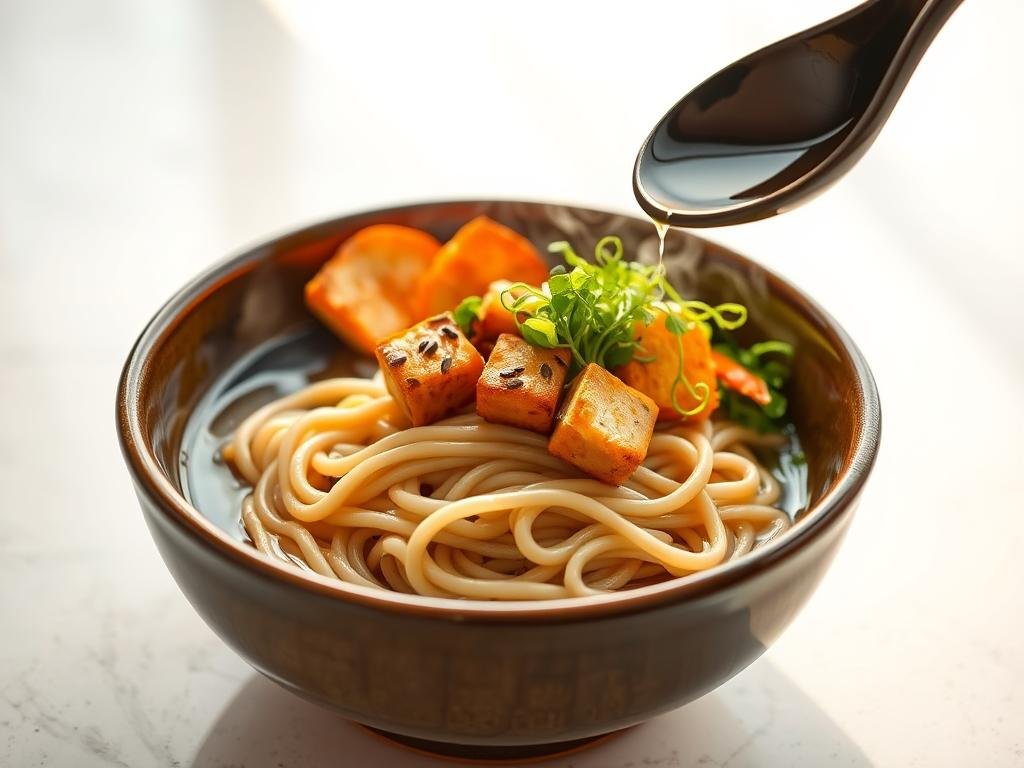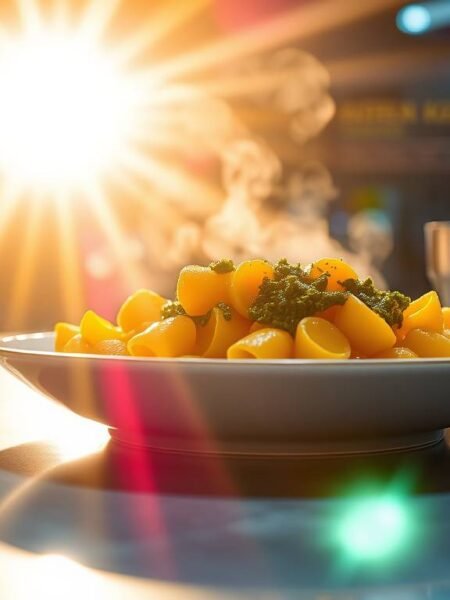Miso Masala Udon with Tandoori Tofu Tempura is a culinary masterpiece that beautifully marries the rich umami of Japanese cuisine with the bold spices of Indian gastronomy. This dish features thick, chewy udon noodles enveloped in a flavorful miso-masala broth, topped with crispy tandoori-marinated tofu tempura. Accompanied by vibrant garnishes such as pickled ginger, microgreens, and black sesame seeds, this bowl is not just a meal but an experience that transports your taste buds across continents.
The origins of udon noodles can be traced back to Japan, where they have been a staple for centuries. Traditionally made from wheat flour, water, and salt, udon noodles are known for their unique texture and ability to absorb flavors. They are often served in a variety of broths, making them a versatile component in many Japanese dishes. On the other hand, the tandoori cooking method hails from India, characterized by the use of a clay oven called a tandoor, which imparts a distinct smoky flavor to meats and vegetables. The fusion of these two iconic culinary traditions results in a dish that is both innovative and deeply satisfying.
The miso-masala broth is a crucial element of this dish, combining the depth of Japanese miso with the aromatic spices of Indian cuisine. Miso, a fermented soybean paste, offers a rich umami flavor that serves as the foundation of the broth. When combined with garam masala, a blend of spices that typically includes cardamom, cumin, and coriander, it creates a harmonious balance of flavors that is both comforting and invigorating. The addition of ginger-garlic paste further enhances the broth, providing a fragrant backdrop that complements the noodles beautifully. This unique fusion creates a broth that is not only delicious but also gut-friendly, owing to the probiotic qualities of miso.
The tandoori tofu tempura adds a layer of texture and flavor that elevates the dish to new heights. Tofu, often overlooked as a bland ingredient, becomes a star when marinated in a tandoori spice blend, which typically includes paprika, cumin, and turmeric. This marinade infuses the tofu with vibrant colors and complex flavors, while the tempura batter provides a light and crispy exterior. Frying the tofu until golden creates a delightful contrast to the soft udon noodles and the rich broth, resulting in a dish that offers a variety of textures in every bite.
Garnishes such as pickled ginger and microgreens not only enhance the visual appeal of the dish but also bring freshness and brightness that balance the richness of the broth and the fried tofu. Pickled ginger, with its sharpness and tang, cleanses the palate, while microgreens add a touch of earthiness and nutrition. The sprinkle of black sesame seeds not only adds visual interest but also contributes a nutty flavor that ties all the elements of the dish together.
In crafting this recipe, attention is paid not just to flavor, but also to presentation. The aesthetic of the dish is reminiscent of modern art, with its vibrant colors and symmetrical layering. Serving this bowl in a deep ceramic dish enhances the overall experience, inviting diners to appreciate the beauty before indulging in the flavors. Miso Masala Udon with Tandoori Tofu Tempura is a testament to the power of culinary fusion, where diverse traditions come together to create something entirely new and delightful.
Ultimately, this dish represents more than just a meal; it embodies a celebration of cultural exchange and innovation in the culinary arts. Each ingredient tells a story, and every bite is an invitation to explore the rich tapestry of flavors that define both Japanese and Indian cuisines. Whether enjoyed on a chilly evening or as a vibrant lunch, this bowl is sure to leave a lasting impression on anyone fortunate enough to experience its unique blend of tastes.

Miso Masala Udon with Tandoori Tofu Tempura
Ingredients
Instructions
-
the Tandoori Tofu Tempura
- Marinate the Tofu
In a medium bowl, combine the vegan yogurt, lemon juice, tandoori masala, turmeric, and salt to taste. Add the pressed and cut tofu rectangles, ensuring they are well coated with the marinade. Let it marinate in the refrigerator for at least 30 minutes to absorb the flavors.
Pressing the tofu removes excess moisture, allowing it to absorb more marinade. Prepare the Tempura Batter
-
In a deep pan, heat neutral oil over medium-high heat. Once hot, dip each marinated tofu piece into the chilled tempura batter, allowing excess to drip off. Carefully place the battered tofu into the hot oil and fry until golden brown and crispy on all sides, about 3-4 minutes. Remove and drain on paper towels.
Ensure the oil is hot enough to fry the tofu properly; a test piece should sizzle when added.
-
Bring the broth to a gentle simmer over medium heat. Simmer for 10-15 minutes to let the flavors meld. Taste and adjust seasoning if necessary.
Avoid boiling the broth vigorously as this can affect the miso flavor.
-
Place a portion of the cooked udon noodles in a deep ceramic bowl. Ladle the hot miso-masala broth over the noodles. Top with the crispy tandoori tofu tempura, pickled ginger, microgreens, black sesame seeds, and sliced scallions. Optionally, add a spoonful of fermented daikon or mango achar for an extra flavor dimension.
Arrange the toppings aesthetically for a beautiful presentation, making it visually appealing.
Nutrition Facts
- Amount Per Serving
- Calories 1670.53kcal
- % Daily Value *
- Total Fat 65.02g101%
- Saturated Fat 8.99g45%
- Cholesterol 0.04mg1%
- Sodium 7208.88mg301%
- Potassium 661.91mg19%
- Total Carbohydrate 198.23g67%
- Dietary Fiber 21.31g86%
- Sugars 50.42g
- Protein 79.48g159%
- Vitamin A 5271.16 IU
- Vitamin C 83.25 mg
- Calcium 1081.89 mg
- Iron 14.59 mg
- Vitamin E 6.61 mg
- Vitamin K 95.42 mcg
- Thiamin 0.24 mg
- Riboflavin 0.25 mg
- Niacin 3.24 mg
- Vitamin B6 0.51 mg
- Folate 146.37 mcg
- Pantothenic Acid 0.69 mg
- Phosphorus 158.38 mg
- Magnesium 97.92 mg
- Zinc 1.84 mg
- Selenium 8.02 mcg
- Copper 0.78 mg
- Manganese 1.18 mg
* Percent Daily Values are based on a 2,000 calorie diet. Your daily value may be higher or lower depending on your calorie needs.



